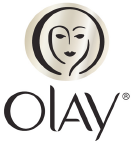
Verizon is one of the largest telecommunications providers in the world, supplying voice, data, wireless and video services to millions of business and consumer customers. Following its merger, it faced a new challenge: developing a national brand unifying wireless wire line, data, consumer and business. Its initial branding campaign introduced “Verizon” with the theme “Join in” which featured advertisements with people showing the “V” victory sign. The results from this initial campaign were disappointing. The company faced declining revenue and prospective trouble with their merger.
The Whole Brain Marketing process determined a new branding position, “Progress,” which was translated into campaign themes “Make progress everyday” and “Can you hear me now?” resulting in instant reversal of their revenue decline. The “Progress” branding was launched in February 2002, and within months Verizon registered a $4B revenue increase in wireless revenue alone. Verizon’s brand was measured as the most favorable telecommunications brand in the U.S., passing AT&T and other telecom competitors on trust, reliability, believability and all other attributes measured.

Verizon began losing valuable business customers when cable television providers launched deeply discounted telephone and high-speed data services. Verizon was unable to match CATV’s price because of inherent network differences.
Whole Brain Marketing discovered that while business owners said they select providers based on price, they actually decide based upon a number of hidden, unconscious buying criteria. Owners respond to marketing communications that mirror their business aspirations and those that recognize their business as unique, promise a trusted responsive partner, and pledge to be able to grow with the business as it expands. Verizon created Whole Brain Marketing powered television, internet, mail, and call center messages that related Verizon’s network reliability and features to the owners’ unconscious decision factors. As a result, Verizon realized an immediate 30% decrease in defections to cable providers and a 25% increase in DSL upgrades during the first quarter of the new message’s debut without matching cable’s discounted prices.

The Kimbell Art Museum is an internationally renowned art institution. Despite its international reputation, the Kimbell had a small number of DFW members and its exhibitions drew modest crowds. In contrast, neighboring Dallas museums had experienced rapid growth and enjoyed large paid attendance with inferior exhibitions. Kimbell research showed that most Dallas residents thought its Fort Worth location was too far to visit and its exhibitions were uninteresting and elite.
Whole Brain Marketing uncovered barriers and key motivational appeals that overcame reluctance to drive to Fort Worth to attend the Kimbell’s exhibitions. We created a communications strategy that vaulted the Kimbell to local dominance, breaking state attendance records and expanding its membership to the largest of any Texas cultural organization. The Kimbell attracted more than 500,000 paid visitors in less than six months and increased its membership by 80% in less than one year.

Procter and Gamble is widely recognized for creating the consumer-packaged goods marketing model. Despite their extensive marketing expertise, sales of their flagship brand, Olay, stagnated after they expanded its product lines to address individual skin care needs.
We found unconscious, hidden fears, beliefs and aspirations related to women’s skin care needs that Olay had not addressed and identified the real reasons that sales had stalled. Our messages were incorporated into TV commercials and an interactive website, Olayforyou.com. Comparable in-store sales surged with Walmart reporting a 48% increase in Olay product sales. Web sales jumped 171% in the first month alone. Unsolicited user testimonials to the P&G call center increased by 250%. Procter & Gamble’s Chairman-CEO called the Whole Brain-powered web site, “The year’s best P&G commercial innovation.”

American Airlines is one of the largest airlines in the world, employing more than 17,000 flight attendants, operating more than 600 aircraft and providing service to 250 destinations in 40 countries worldwide. In 2002, American experienced a number of business challenges following terrorist attacks. American faced labor actions from their flight attendants’ threatened strike over staffing cutbacks. Executives warned analysts that a strike would force American into Chapter 11 bankruptcy. Despite best efforts, talks between both sides had failed and time was running out. Labor experts hired by American predicted that the strike could not be averted.
We diagnosed the underlying problem as fundamental differences in the way that flight attendants and management communicated. We worked with management to change the language communication style and format that the CEO, CFO, and other executives used with flight attendants. Internal flight attendant emails and newsletters were modified. Our recommendations did not require financial or other concessions from management’s original proposals. Three weeks after our changes were initiated, the strike effort evaporated and flight attendants agreed to the furlough and work changes that management had originally proposed.